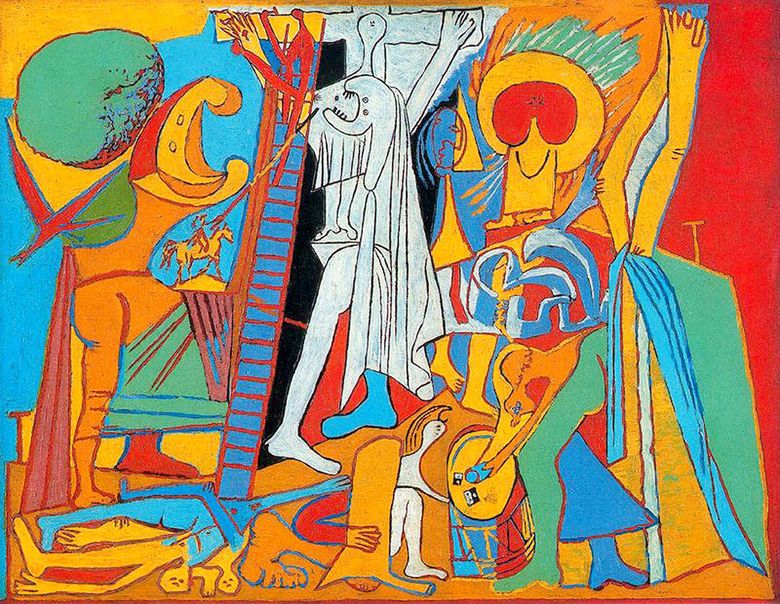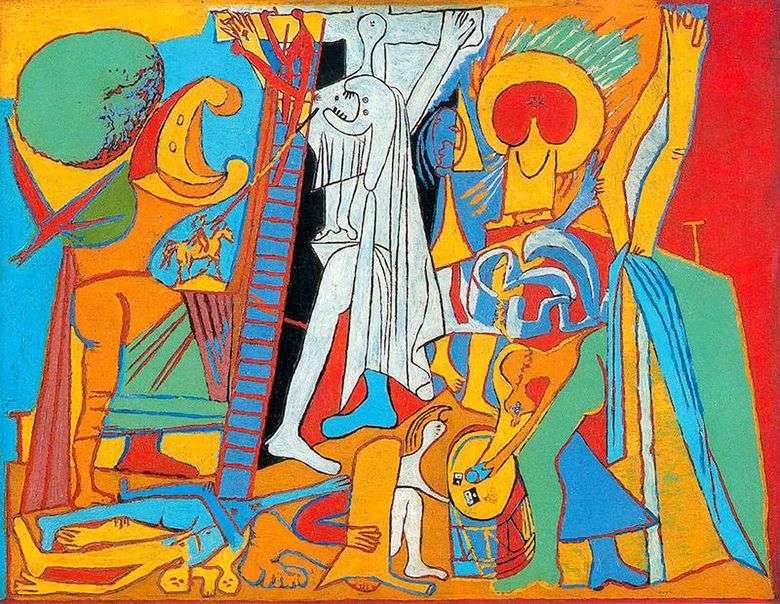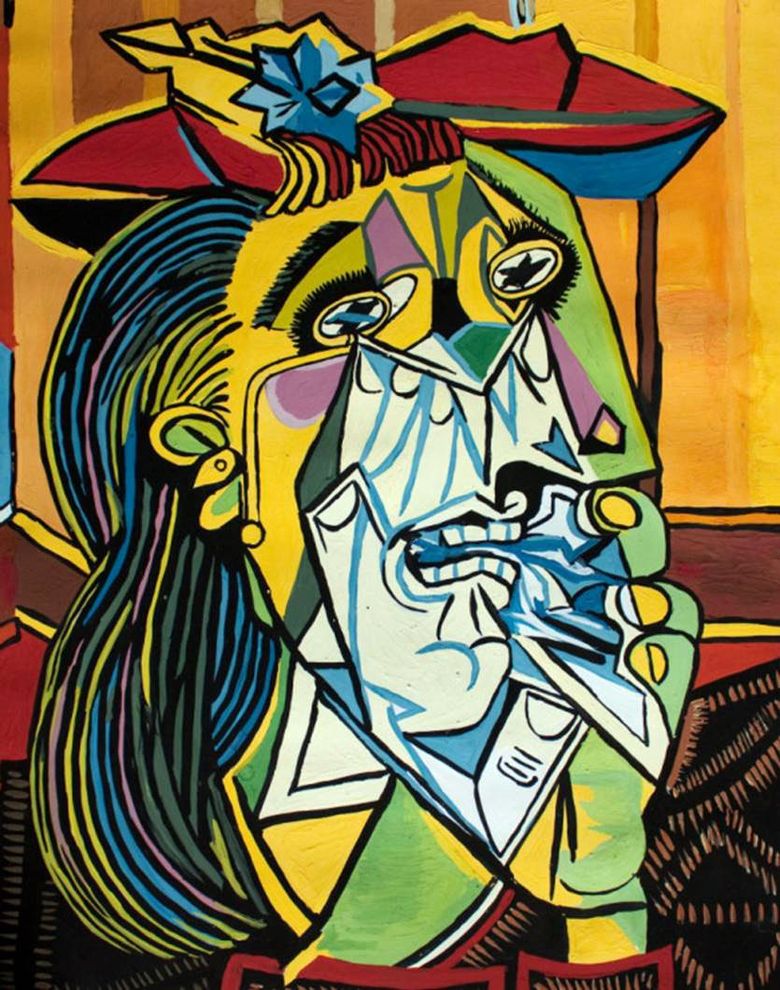
In 1930, Picasso wrote an unexpected picture of the gospel theme for his work – “Crucifixion”, which is considered a landmark step on the way from the first specimen of surrealism – “Three Dancers” canvases to the famous “Guernica”. The work of the plot: in the monstrously deformed figures are recognizable all the participants repeatedly reproduced by artists of all times and peoples of evangelical history.
One of the unique moments of the composition is the use of different scale for the figures. The significance of the characters for the events Picasso emphasizes in size: the crucified Jesus Christ and the Mother of God and Mary Magdalene hardly guessed in sharp contours and color planes are large, a little less – the bodies of brigands thrown from the crosses and soldiers playing the cloak of the executed.
The smallest figurines are the person who pins the hand of Christ to the crossbar and the rider pokes his spear into the nailed body. The dramatically broken characters of the Crucifixion anticipate the affected heroes of Guernica. A surrealistic interpretation of the plot can be interpreted as blasphemy, although an atheist Picasso’s appeal to religious themes is a reflection of his thoughts about what is happening in the world.
 Crucifixion – Pablo Picasso
Crucifixion – Pablo Picasso Nude Green Leaves and Bust by Pablo Picasso
Nude Green Leaves and Bust by Pablo Picasso Crucifixión – Pablo Picasso
Crucifixión – Pablo Picasso Dance by Pablo Picasso
Dance by Pablo Picasso Figures on the beach by Pablo Picasso
Figures on the beach by Pablo Picasso Weeping Woman by Pablo Picasso
Weeping Woman by Pablo Picasso Lovers by Pablo Picasso
Lovers by Pablo Picasso Une femme qui sanglote – Pablo Picasso
Une femme qui sanglote – Pablo Picasso